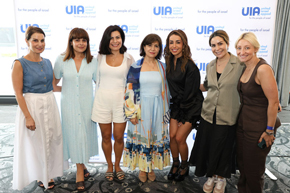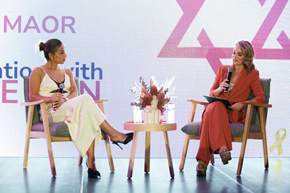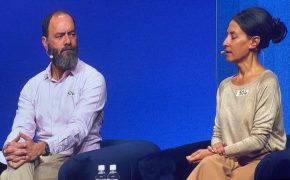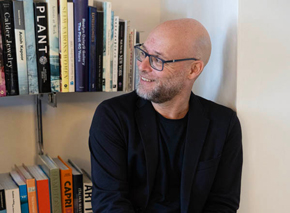From Australia’s Jewish Past
Walter Moritz Boas – noted Physicist and Metallurgist

Walter Boas
Walter was born on 10 February 1904 in Berlin. He was the only child of Jewish German parents, Arthur Abraham Boas, a medical practitioner, and his mother, Adele.
Following his schooling at a technical high school, he studied applied physics at the Technische Hochschule in Berlin, graduating in 1930 with two engineering degrees. The research project that formed part of his physics studies was ‘an investigation of the influence of load and temperature on the plastic deformation of metals’. The project led to a joint publication with Professor Richard Becker who had been his supervisor and this set the direction for Water’s life’s work in science. His doctoral degree was based on further work in this field conducted jointly with Erich Schmid at the Kaiser-Wilhelm-Institut für Metallforschung at Berlin-Dahlem.
From 1933 to 1937, Walter worked in Switzerland, first at the University of Fribourg and then at the Eidgenössische Technische Hochschule. While at Fribourg, he and Erich Schmidpublished their book Kristallplastizität in 1935. This continued in German and English publications for the next thirty-five years.
With the world situation changing in Europe, Walter took an appointment at the Royal Institution in London, until he could find a more permanent position and was aided by the Society for the Protection of Science and Learning. In January 1938, he accepted a two-year appointment at the University of Melbourne, funded by the Carnegie Foundation, in preference to a position at University College, London. He married on 22 March at the registry office in Hampstead, London, and arrived in Melbourne in May 1938.
For the next nine years, Walter lectured in the Metallurgy Department of the University of Melbourne, and from 1940 as senior lecturer. His book – Introduction to the Physics of Metals and Alloys, published in 1947, was based on his lectures. Although initially classified as `enemy aliens’ during the war, he and his wife were soon accorded `refugee alien’ status and naturalised in 1944. Most of his research in this period was conducted in conjunction with the Council for Scientific and Industrial Research’s section of lubricants and bearings, set up by Frank Bowden, a physicist colleague. Walter enjoyed a part-time appointment there from 1944, and during this time, the section he worked in was renamed Tribophysics under Frank’s successor, Stewart Bastow, who appointed Walter in 1947 to the position of principal research officer. He succeeded, somewhat reluctantly to the headship of the division of Tribophysics in 1949, when CSIR was recast as the Commonwealth Scientific and Industrial Research Organisation and Stewart joined the executive.
Walter was a friendly, hospitable man who fostered a family atmosphere in his division. He combined administration with strong leadership, nurturing the careers of his young scientists through joint research and publication, and promoting basic research into the structure and properties of materials. His international reputation grew and in 1956, he spent three months in the United States as a visiting lecturer in metallurgy at Harvard University. He encouraged interaction between the University of Melbourne and CSIRO, lecturing in physics and engineering, serving on the Faculty of Science, and accepting the appointment of Honorary Senior Associate in solid state physics. Late in the 1950s, Walter established a Pugwash group in Melbourne. This international organisation held conferences on Science and World Affairs working to reduce the risk of war and weapons of mass destruction. He represented Australia at the Oslo conference in 1961 against the spread of nuclear weapons and helped to organise the Pugwash Regional Meeting in Melbourne in 1967. These conferences brought together scholars and public figures who sought cooperative solutions to global problems.
In 1943, Walter became a fellow of the Institute of Physics, the Australian Academy of Science in 1954 and the Australian Institute of Physics in 1962. He was elected as a foreign scientific fellow in 1965 of the Max-Planck-Institut für Metallkunde and a corresponding member of the Austrian Academy of Sciences in 1972. Between 1966 and 1972 he was a vice-president of the International Union of Pure and Applied Physics.
After he retired from the CSIRO in 1969, he continued at the University of Melbourne as a hardworking honorary senior associate in metal physics. He published his third book, Properties and Structure of Solids in 1971, and was awarded an honorary doctorate of applied science by the university in 1974.
Walter passed away on 12 May 1982 in Melbourne. The Australian Institute of Physics established the Walter Boas Medal to be awarded annually for excellence in research in physics in Australia. The Royal Melbourne Institute of Technology, which he had served as an adviser, created an annual Walter Boas prize for the best final-year student in applied physics, and the University of Melbourne named in his honour the building in which he had worked.
The AJHS acknowledges the following references in the preparation of this story:
Australian Dictionary of Biography – Ian D Rae; Wikipedia; Australian Records of Australian Science

The Australian Jewish Historical Society is the keeper of archives from the arrival of the First Fleet in 1788 right up to today. Whether you are searching for an academic resource, an event, a picture or an article, AJHS can help you find that piece of historical material. The AJHS welcomes your contributions to the archives. If you are a descendant of someone of interest with a story to tell, or you have memorabilia that might be of significance for the archives, please make contact via www.ajhs.com.au or stories@ajhs.com.au.







